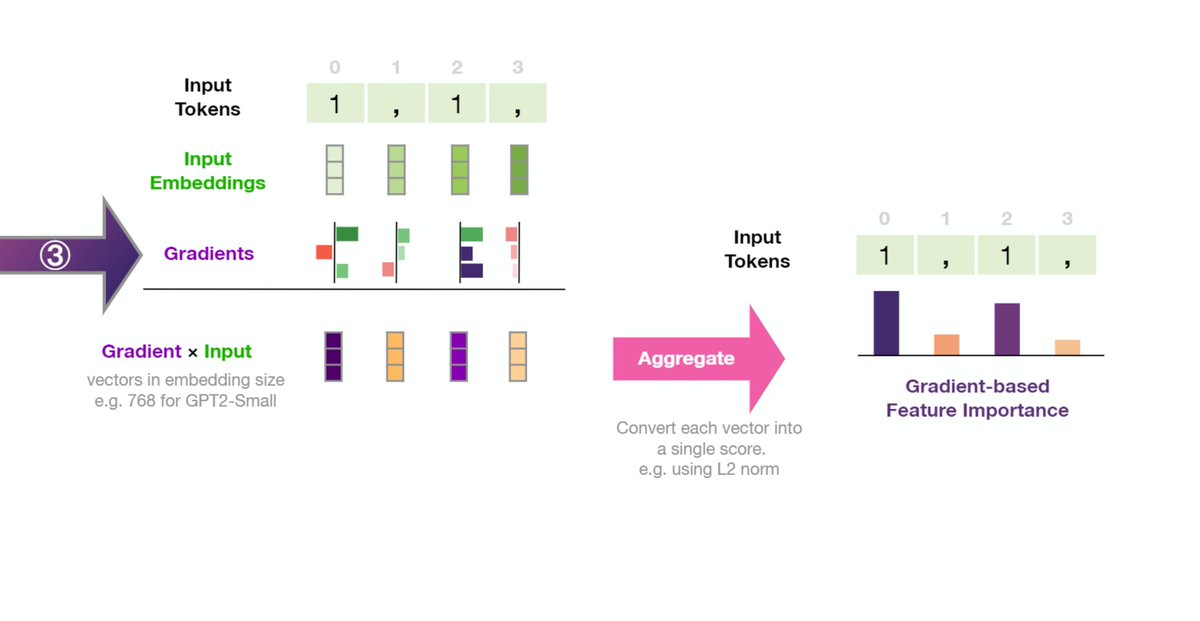
A 🧵looking at DeepMind's Retro Transformer, which at 7.5B parameters is on par with GPT3 and models 25X its size in knowledge-intensive tasks.
A big moment for Large Language Models (LLMs) for reasons I'll mention in this thread.
deepmind.com/research/publi…
A big moment for Large Language Models (LLMs) for reasons I'll mention in this thread.
deepmind.com/research/publi…

Language modeling trains models to predict the next word.
Sometimes, the completion requires knowledge of factual information. Other times, familiarity with language is enough (expressions, grammar).
Examples in the image. Completions:
1) 2021
2) time
Sometimes, the completion requires knowledge of factual information. Other times, familiarity with language is enough (expressions, grammar).
Examples in the image. Completions:
1) 2021
2) time

Large GPTs had to encode everything they know in their model parameters. This makes sense for language data. But it's inefficient knowledge information (there so many facts).
Now the Language model can be much smaller, and a neural database helps it with retrieval.
3/n
Now the Language model can be much smaller, and a neural database helps it with retrieval.
3/n

This way, you get the following benefits:
1) The core language model can be much smaller. Which means it can be faster and easier to deploy on smaller GPUs.
2) To add new information to the model, you (may be able to) simply update the database without re-training.
4/n
1) The core language model can be much smaller. Which means it can be faster and easier to deploy on smaller GPUs.
2) To add new information to the model, you (may be able to) simply update the database without re-training.
4/n
Mechanically, it's an encoder-decoder model just like the original transformer, T5, or T0.
It uses the help of a neural database to augment its input, however.
5/n
It uses the help of a neural database to augment its input, however.
5/n

The database looks like this.
It's a key-value store. The key is standard BERT embeddings.
The value is text in two parts:
1- Neighbor, which is used to compute the key
2- Completion, the continuation of the text in the original document.
Retro's database is 2 trillion tokens
It's a key-value store. The key is standard BERT embeddings.
The value is text in two parts:
1- Neighbor, which is used to compute the key
2- Completion, the continuation of the text in the original document.
Retro's database is 2 trillion tokens

How is the database incorporated?
This is the process:
Before hitting Retro, the input prompt actually goes into BERT.
The output contextualized vectors are then averaged to construct a sentence embedding vector.
That vector is then used to query the database.
7/n
This is the process:
Before hitting Retro, the input prompt actually goes into BERT.
The output contextualized vectors are then averaged to construct a sentence embedding vector.
That vector is then used to query the database.
7/n

That sentence embedding is then used in an approximate nearest neighbor search (using: github.com/google-researc…).
The two nearest neighbors are retrieved, and their text becomes a part of the input into Retro.
8/n
The two nearest neighbors are retrieved, and their text becomes a part of the input into Retro.
8/n

This is now the input to Retro. The input prompt and its two nearest neighbors from the database (and their continuations).
From here, the Transformer and Retro Blocks incorporate the information into their processing.
From here, the Transformer and Retro Blocks incorporate the information into their processing.

Architecture: An encoder stack and a decoder stack.
The 7.5B parameter model has 32 layers. So I'm thinking 16 in the encoder and 16 in the decoder (Counting the parameters should verify).
10/n
The 7.5B parameter model has 32 layers. So I'm thinking 16 in the encoder and 16 in the decoder (Counting the parameters should verify).
10/n

The encoder seems to be made of standard Transformer encoder blocks (self-attention + FFNN).
The decoder stack interleaves two kinds of decoder blocks:
- Decoder Block (Attn + FFNN)
- Retro Decoder Block (Attn + Chunked cross attention [CCA] + FFNN)
11/n
The decoder stack interleaves two kinds of decoder blocks:
- Decoder Block (Attn + FFNN)
- Retro Decoder Block (Attn + Chunked cross attention [CCA] + FFNN)
11/n

Correction: I now see the decoder is 32 layers.
Every third block starting from 9 is a Retro block (that allows its input to attend to the neighbors). So 9, 12, 15...32).
Decoder blocks only work on the input text. No enc-dec cross-attention in the model aside from CCA.
12/n
Every third block starting from 9 is a Retro block (that allows its input to attend to the neighbors). So 9, 12, 15...32).
Decoder blocks only work on the input text. No enc-dec cross-attention in the model aside from CCA.
12/n

The paper continues and builds on previous retrieval work including
openreview.net/forum?id=B184E… @EXGRV et al
arxiv.org/abs/2102.02557
@DaniYogatama et al
openreview.net/forum?id=HklBj… @ukhndlwl et al
and others
openreview.net/forum?id=B184E… @EXGRV et al
arxiv.org/abs/2102.02557
@DaniYogatama et al
openreview.net/forum?id=HklBj… @ukhndlwl et al
and others
• • •
Missing some Tweet in this thread? You can try to
force a refresh



















